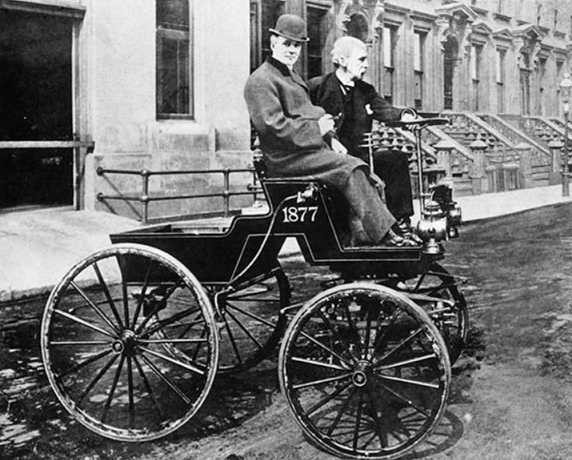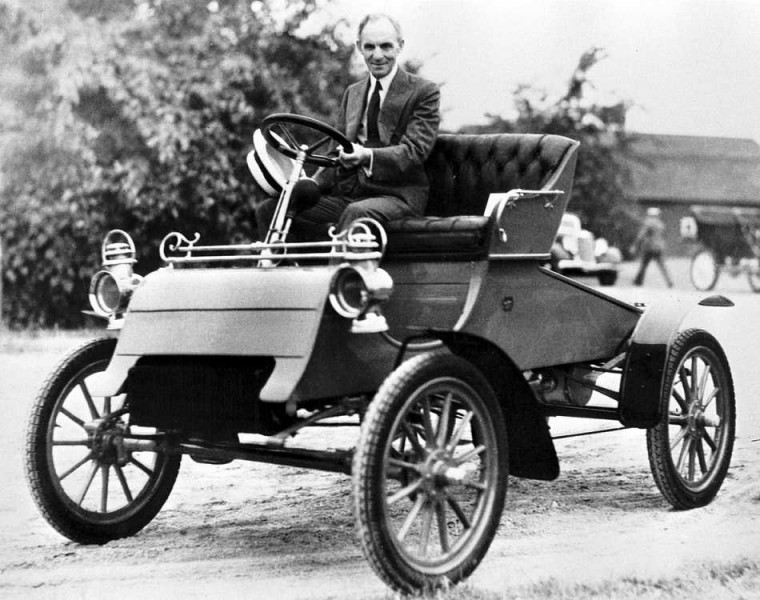U.S. Automotive History: 1900-1920, the Formative Years
The automobiles of the 1900s were known as horseless carriages and at the turn of the century, there were at least 100 different brands available in the United States. This was a very exciting time as inventors and car developers were in heavy competition to come up with the best vehicles in highly-volatile rapidly changing market.
Literally handmade, the cars made in the 1900s were basically high-priced toys that only the rich could afford. Nevertheless, these horseless carriages sold briskly and first started appearing on our streets here in Sierra Vista and throughout the state of AZ, as well as in big cities such as New York, Boston and Philadelphia, where cabs, delivery trucks and ambulances quickly became commonplace.
Here are some historical snapshots about the automobiles of the 1900s, brought to you by Ed Morse Collision Center, located in Sierra Vista AZ.

The Duryea Brothers
It all really began when two brothers, Charles E. and James F Duryea, became the first to manufacture and market a successful gasoline-powered automobile. James Duryea completed the first Duryea automobile in 1893, in Springfield, Massachusetts, working with his brother's design. In 1895, the duo established the first American automobile manufacturing company. On Thanksgiving Day, 1895, in what was dubbed the "Race of the Century," Frank Duryea won a 54-mile race from Jackson Park in Chicago to Evanston and back again. The prize money was $2,000 but in addition to the prize money, the Duryea brothers also became celebrities.
The sudden rush of fame allowed the brothers to form the Duryea Motor Wagon Company and produce early 1900s cars. Orders began arriving soon and unofficially, the American automobile industry was born as the brothers manufactured the first of 13 vehicles in 1896. But by the end of the century they had split up, destroyed by jealousy and greed, never to make cars ever again.

Ransom E. Olds
A blacksmith's son from Lansing, Michigan named Ransom E. Olds was only 18 when he hooked a steam engine to a three-wheeled vehicle and took off for a ride around his neighborhood. Despite his youth, he perceived that steam engines had a tendency to explode. He was ahead of his time when he had the intuition that gasoline, which was then abundant and cheap, would fuel the early 1900s cars as well as future cars. He began to work of an internal combustion engine of his own. He also was among the first of the American investors to recognize the need for an automobile that was functional and reliable, a car for everyone.

Henry Ford
Although Olds and Cadillac developed the idea of standardized and interchangeable parts, it was Henry Ford who developed mass production and made possible rapid production of the early 1900s cars. In 1908 the Ford Motor Company produced the famous Model T Ford. His idea was to produce and motor car that the average person could afford, operate, and maintain. The first Model T Ford sold for $850. By 1915 the price of a Model T had dropped to $440.00, and by 1925 a Model T could be bought for $290.00. The early 1900's cars now are within reach of the average car buyer.
Ford's ideas truly revolutionized car manufacturing by developing the first assembly line in 1914. The basic idea of the assembly line was to move the car on a moving conveyor belt while workers on each side added parts as the car moved along. Often the parts were brought to the workers on another conveyor belt. Each worker had a specific relatively simple task to perform as compared with assembling an entire engine. The use of standardized interchangeable parts also produced a better product that could be easily repaired at lower cost. Before the assembly line, it had taken more than twelve hours to assembly a Model T. New Model T's now come off the assembly line at the rate of one car every 24 seconds.

Other Notable Innovations
- The early 1900s cars also benefited from major advances in automotive technology. In 1912, the electric starter, an electric motor that starts the gasoline engine, was invented. It made the operation of the 1910s cars a lot easier.
- World War I proved the value of the gasoline automobile. Trucks and ambulances were used in great numbers during the war, and the war proved to be a testing ground for automotive design.
- The early 1900s cars underwent many changes from 1900 through 1920. During this time, closed cars that protected the drivers and passengers from sun and rain became the norm.
The next time you look at your new hybrid, a luxury vehicle loaded with technology or an old classic car you love, give a little recognition to all of the great minds that made it all happen more than a century ago. Because at Ed Morse Collision Center, we know that without these great inventors and progressive thinkers, we would not have the amazing automobiles that we have today.
Sources: Wikipedia, U.S. News & Report and Motor Trend




















Social